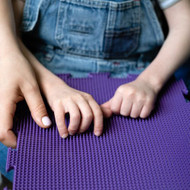Patching Special Needs Kids
25th Aug 2023
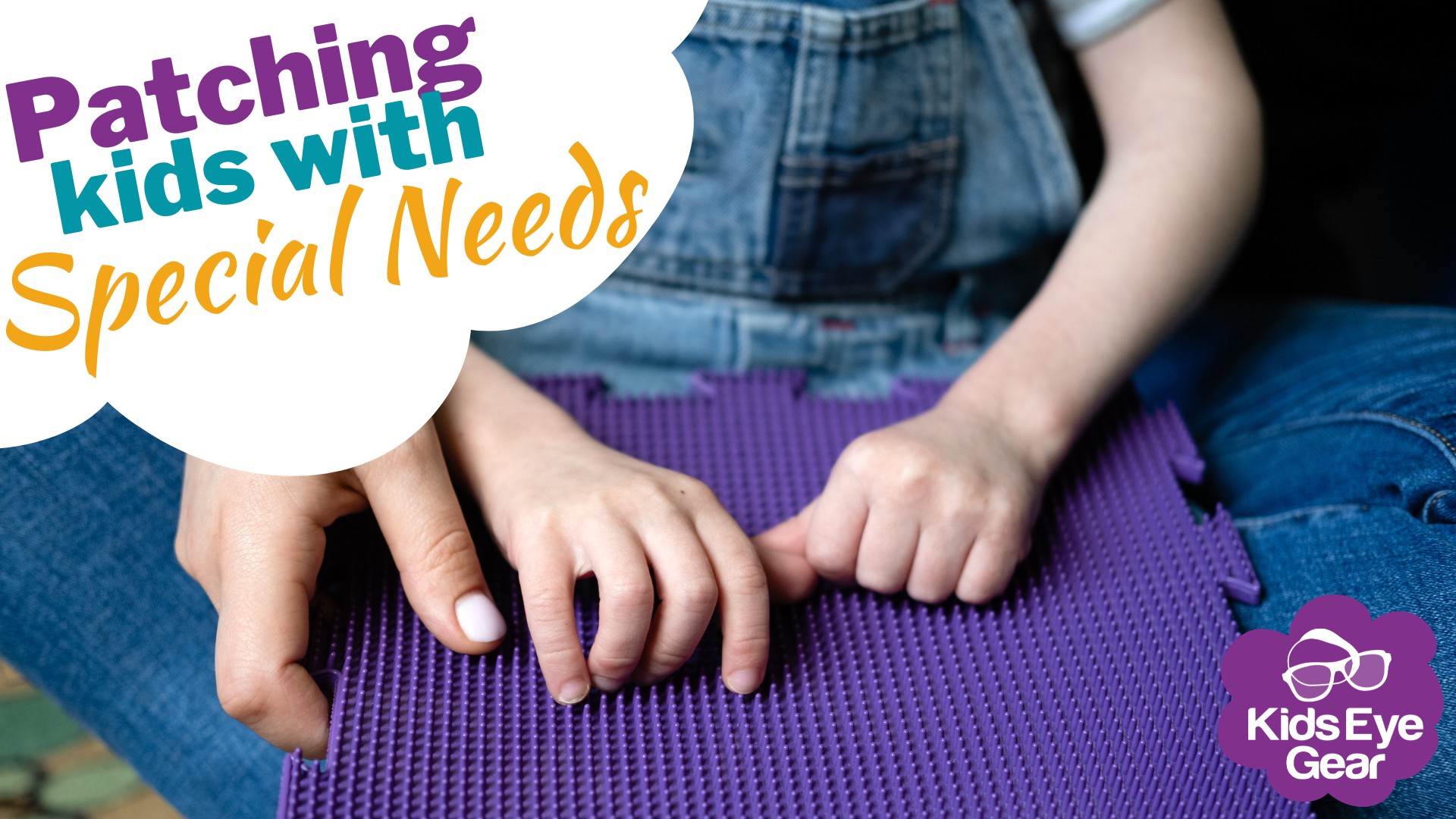
Patching your child can be tough enough but throw in the child being neurodivergent or having sensory issues and the challenge can be insurmountable.
My friend, Kym, recently reached out as her little girl Frankie needed to begin patching therapy to treat Amblyopia and Strabismus. Frankie had previously tried Atropine drops but had used them for the maximum appropriate time – so now needed to try patching.
Frankie is a very special little girl who lives with a rare genetic condition, special needs, global development delay and medical complications. You can meet Frankie here. So patching was NOT going to be easy!
Kym wanted to know if I had any tips or advice that would help with Frankie’s patching treatment. Although we have plenty of helpful articles on our website, I realised there was nothing specifically relating to patching a neurodivergent child or child with sensory issues. So I turned to a few of my favourite orthoptists for some help, as well as other parents in kids vision Facebook groups. Here's what they had to say.
Natalie Ainscough, orthoptist and owner of Adelaide Orthoptics had some great suggestions.
“If your child wears glasses we try to start with not using fabric eye patches or the child can start to associate patching with wearing their glasses. Children will often want to remove their patch, but we don’t want them to remove their glasses as well as a patch. So separating the glasses and patch is desirable,” Natalie says. “If you do need to use fabric patches, consider different fabric types: cotton vs felt vs silk – and do not use pirate style patches, as they are too easy to peak with.”
“Sometimes removing the patch can be the cause of upset, so making that as easy a process as possible can help. Try making the adhesive less sticky by applying it to the back of your hand or to your clothes before applying it to the child’s face. Or soak off the adhesive patch in the shower or bath, or with a damp warm flannel held on for 5 minutes. This can help the child cope with the thought of the removal process.
“If the patch is a significant issue there can be other options. This might include therapy using Atropine 1% eye drops or to change up the days and hours of patching. For instance, it might be possible to do fewer days in the week but for more hours – particularly if remove of the patch is a significant issue. Both these options definitely require discussion with your ophthalmologist, orthoptist or optometrist first.”
Louise Brennan, Orthoptist & Orthoptics Australia (OA) member agrees that patching neurodivergent kids especially with sensory issues can be challenging.
“Often, after taking a holistic approach to the child and listening to the parents’ concerns regarding face occlusion, we will not opt for patching directly onto the skin at all. If the thought from the parent and the clinician is that face occlusion will fail we will not try that at all as a first line treatment,” Louise says.
“Instead, we would recommend a cloth patch on the glasses. This can work with neurodivergent kids as it is softer, non-sticky and they get to pick their favourite design. If the child does not have glasses we would recommend getting a Plano (0.00) pair of glasses to put the cloth patch on. Alternatively to the plano glasses, parents could speak to their optometrist, as a pair of glasses with a very mild prescription of +0.25 might be an option to then get health fund rebate if appropriate.”
“If the fabric patching doesn’t work the use of atropine drops is a good option to try as well. Current paediatric evidence-based practice is to put one drop of Atropine 1% into the "good eye" two consecutive days a week, eg. Saturday morning, Sunday Morning. The maximum duration Atropine is usually used for is 6 to 12 months, and the ‘good eye’ must be monitored closely for reverse amblyopia.”
“I also like to remind parents that if it is not going well, it’s okay to do a total reset - have a one week break then start with a fresh approach! For those parents that want to keep trying, a great idea is to start a regime of gradual build up and to keep a diary. For example, 10 minutes a day for one week, then 20 minutes for next week, then 30 minutes for next week etc, with the aim being to make it a positive experience.
“Another great idea, if the child is seeing other therapists, for example an Occupational Therapist, Speech Therapist or Psychologist, is to ask if for some sessions the child can wear the patch with them in session to help get it done, or work through any sensory or emotional issues they’re having about the patching,” says Louise.
Heading to Facebook, I found some great tips and tricks from other parents who have experienced the same issues.
- Let the child play with a patch first, so they understand it, can feel it and are not scared of it.
- Wear a patch (and glasses if applicable) along with your child – and pop one on their favourite teddy or doll as well
- Wear the patch at daycare or kindy – kids can often be more compliant with people that are not their parents, and can be distracted by the activities they’re enjoying.
- Put together a special toybox of toys that can ONLY be touched when patching. After a week of patching, let the child go shopping for a new item that goes into the toybox that they can’t use until patching again. This can also work for particular TV shows or games.
- Get some books about other kids patching. There’s a list here [link to books about patching and wearing glasses on KEG website]
- Get your photo editing skills going and create a book of pictures of their favourite characters but put patches on them.
- Try to follow a routine and build it into your daily routine. First thing in the morning is often a popular patching time.
- Let the child pick out their patches – and even let them do the online shopping for them with you! This helps the child feel they have more control over the situation.
- Have family members help you and hold the patcher’s hands while you read some books to them. Have another person managing a timer – every time the timer gets to 30 seconds or 1 minute (or what the patcher might tolerate), they might get a Smartie or M&M. You can also use stickers or sips from a juice box, or whatever is going to work for your patcher. It can be really intense for a few days but hopefully the child will eventually accept that they have to do it.
So coming back to Frankie, her mum Kym has been doing an outstanding job of getting Frankie to patch.
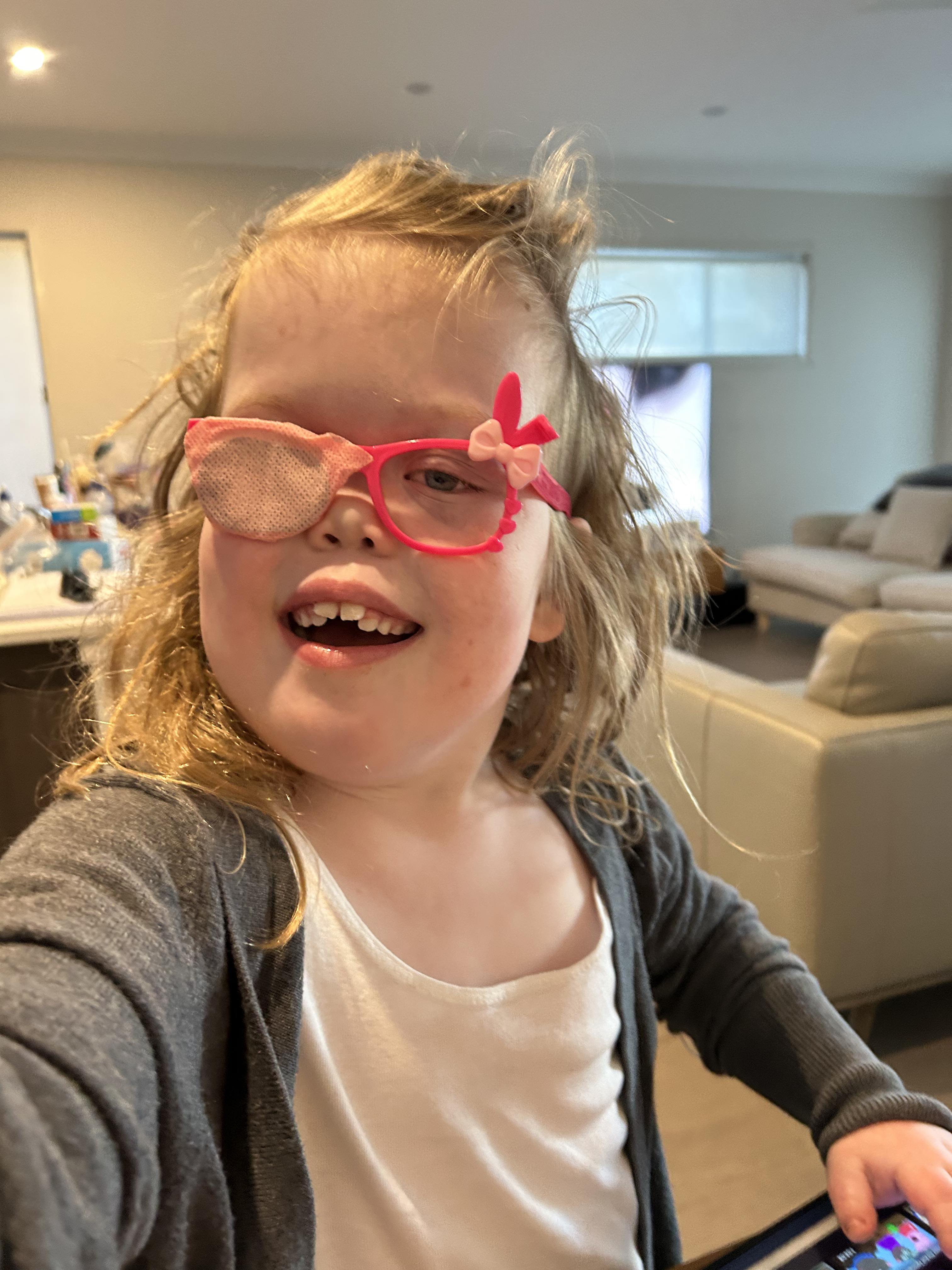
Frankie did an exceptional job starting off with her patching, using Kids Eye Gear adhesive patches stuck over some reader glasses.
She knew that Frankie would not be able to cope with patches stuck to her face, so she stuck sticky patches over a pair of sunglasses with the lenses popped out, and distracted with her favourite game on the iPad. They built up time each day and so far Frankie has been doing really well. She has now switched to a fabric patch, as it will block light than just covering the front of the glasses. Kym bought two sets of reader glasses from the chemist, which cost about $19 each, and removed the glass lenses, patched one side on each pair. As Frankie is required to patch her eye up to 6 hours a day, Kym thought having a set for school was important too. This is giving Frankie the opportunity to wear her glasses more, and supporting the goal of 6 hours a day.
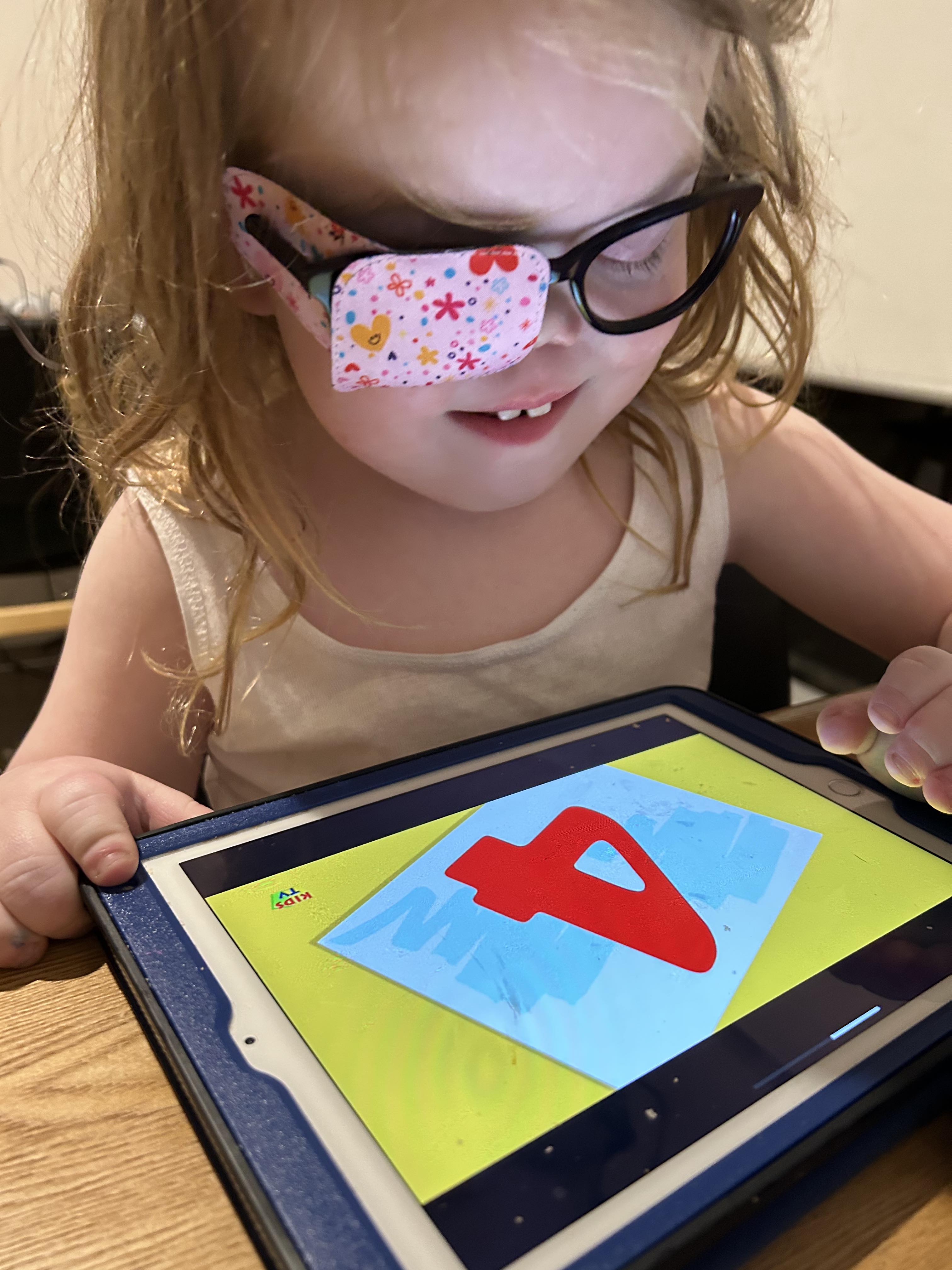
It's important to try to block as much light as possible when patching, so moving to a fabric patch that covered the reader glasses was required.
After just a few weeks, Kym saw a major improvement in Frankie’s left eye, not just straightening it, but Frankie using her eye to read, focus and engage.
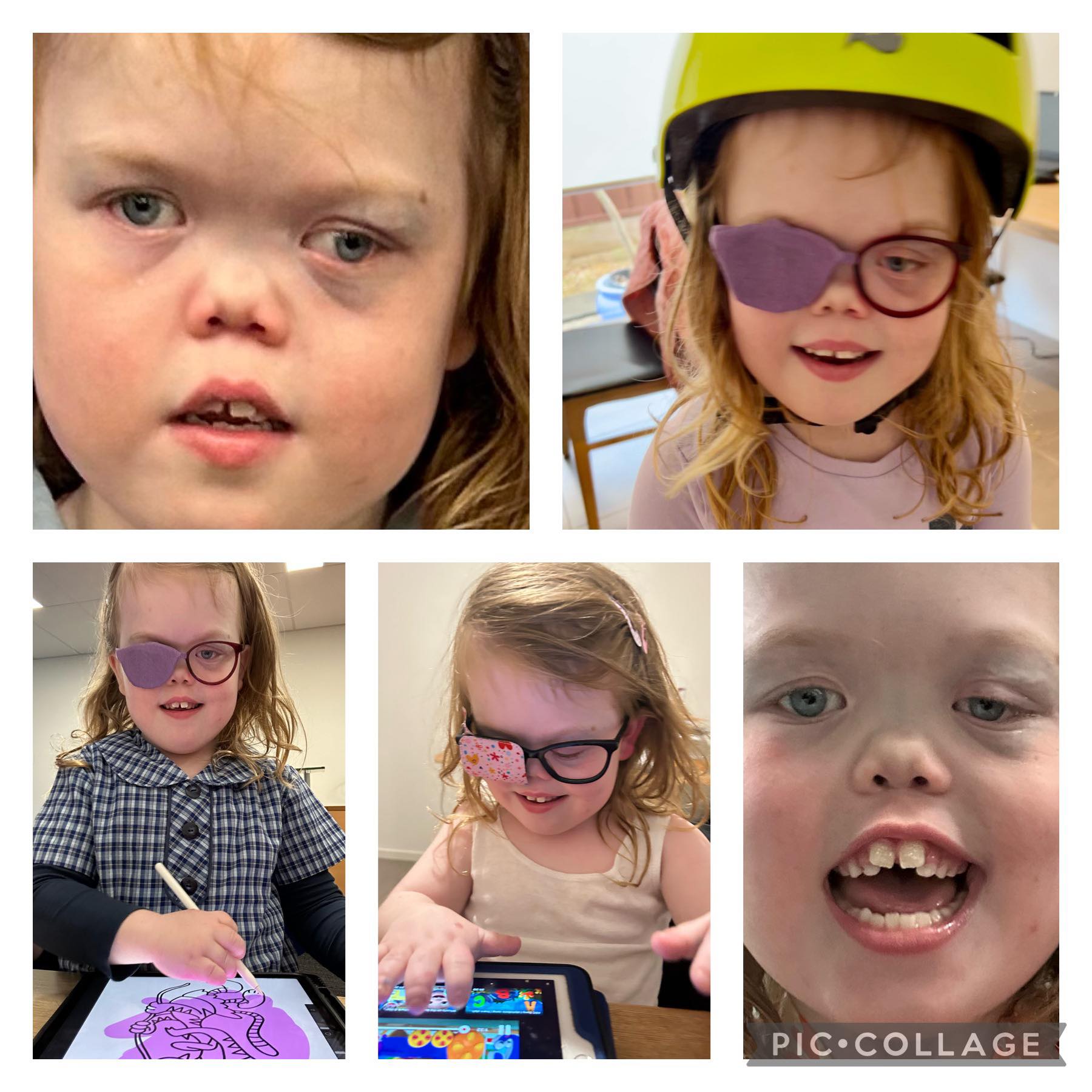
At the end of the day, patching can be really challenging for a LOT of kids, so working through a variety of tips to see what might work for your child is the best course of action. Remember that your eye care professional is there to help you, so keep them in the loop – and be honest! – about how the patching is going. They shouldn’t judge you or be nasty to you but will work with you to find a solution that will give your kiddo the best chance at getting good vision.
Hang in there patching parents!

